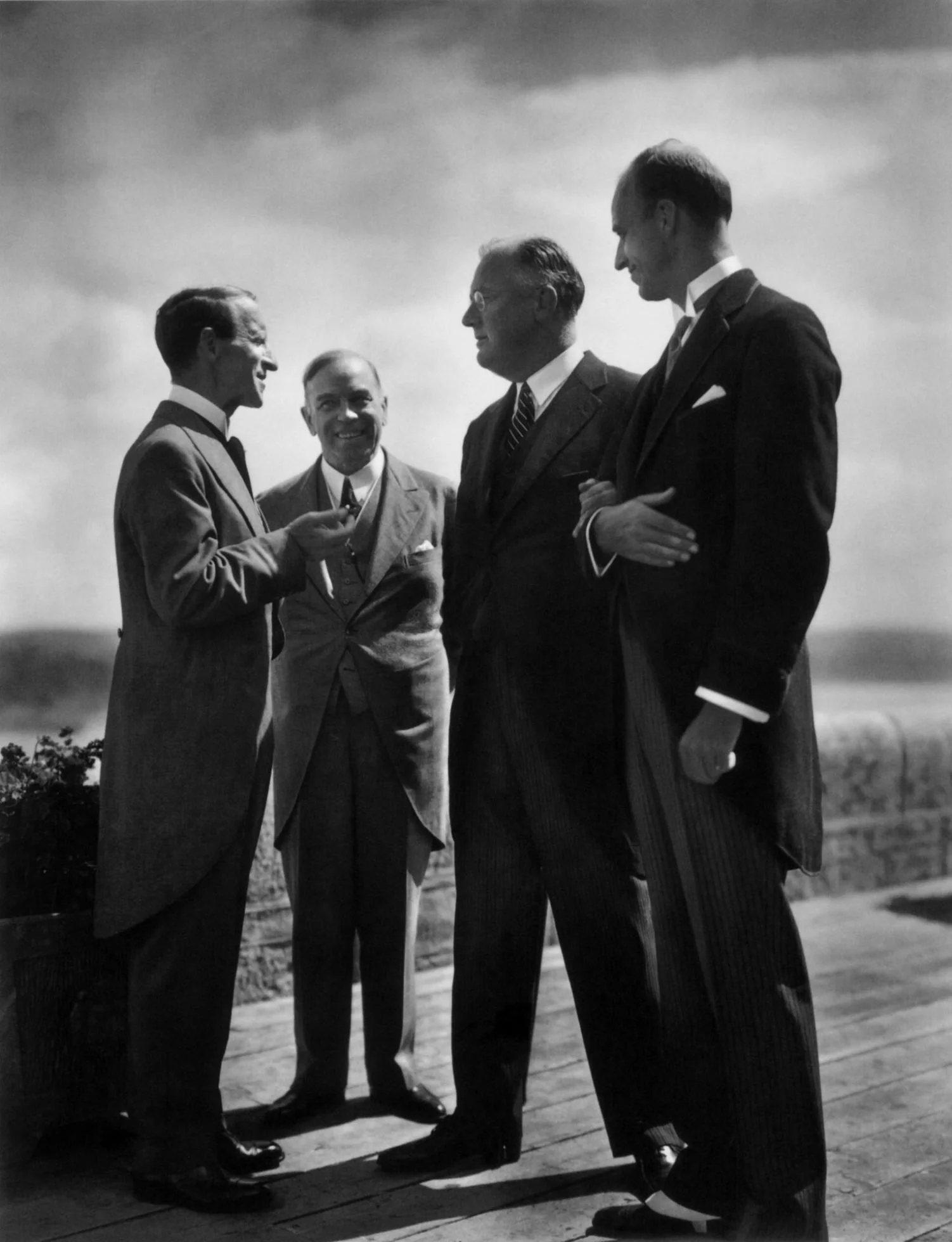Yousuf Karsh: Photographing History
Yousuf Karsh was born in December 1908 in present-day Turkey. He is an Armenian-Canadian photographer known for his portraits of famous women and men, including politicians, Hollywood stars, and artists. He photographed figures such as Albert Einstein, Walt Disney, and even Winston Churchill.
In 1922, he had to flee his country due to ongoing persecution. Two years later, he reached Canada, where he lived with his uncle, a portrait photographer. His uncle immediately noticed Yousuf's talent and sent him to Boston in 1928 to study with the most famous photographer of the time, John Garo, who would become one of the greatest influences on the young man.
The lessons with Garo were supposed to last only six months, but Yousuf continued his apprenticeship for the next three years, during which he also attended evening art school classes. Garo introduced the young man to artificial lighting techniques, which would serve as the basis for the dramatic use of light in Karsh's photographs.
In 1931, Karsh returned to Canada, settling in the capital, Ottawa, where he established a photography studio with financial help from his uncle. He began collaborating with the local small theater, photographing actors and sets.
Karsh saw his portraits published in Canadian magazines and the Illustrated London News, attracting the attention of the Canadian Prime Minister through the sympathies of the Governor General's son, a friend and fellow member of the theater troupe.
According to books, this young man organized a photo session in Karsh's studio for his parents, members of high society, who arrived in royal attire. Yousuf was so nervous that he couldn't focus the frame and barely spoke, but he did not let this first failure define him and had the courage to ask the powerful family to return a second time.
Following this, the Canadian Prime Minister gave Karsh the opportunity to photograph visiting political dignitaries from other countries. His breakthrough came in 1936 during a meeting between President Roosevelt and Canadian dignitaries. That morning, Karsh had not been able to join the group of photographers and cameramen gathered for the official photos, but on the advice of a friend, he stayed nearby until the afternoon. During a break, the dignitaries expressed pleasure in posing for one last shot. Karsh tells us that the four stood side by side in typical ceremonial rigidity, but he had other plans. He pretended to take the photo and thanked them. Only after it was officially over, when the group was relaxed and engaged in an anecdote, did Karsh press the shutter button.
Following this, Yousuf was regularly used as the Canadian government's photographer. The photographer gained international fame starting in 1941 with the historic image of Winston Churchill. Here, his clear dedication to his work is evident: taking advantage of the opportunity offered by his Prime Minister, Karsh prepared the scene the night before, arranging the lights and setting up the camera so that the next day, after his speech, President Churchill would only need to take his position without waiting.
Winston Churchill was unaware of the photographer's presence in the office and was taken aback but allowed Karsh to take one shot. Churchill was famous for his cigars and, naturally, lit one up. However, Karsh did something unforgettable: he approached the president, apologized in advance, and removed the cigar from Churchill's mouth with his fingers, leaving Churchill with the belligerent gaze captured in the image when Karsh clicked the camera.
During World War II, Yousuf Karsh photographed political and military leaders, writers, actors, artists, musicians, scientists, and post-war celebrities. His photos became famous for their use of dramatic lighting techniques, which became a hallmark of his photography.
In addition to portraiture, Yousuf Karsh also ventured into landscape photography and commercial photography for some automotive and industrial companies, though he is not particularly remembered for this.
After publishing a series of photographic books, mainly dedicated to famous people, Karsh closed his studio in 1992 and moved back to Boston. He died ten years later, in 2002.
Among the most famous figures whose portraits still resonate today are Albert Einstein, Ernest Hemingway, Alfred Hitchcock, Fidel Castro, Martin Luther King, Nelson Mandela, Mother Teresa, and Andy Warhol.
Karsh made history in photography precisely because he portrayed the history of humanity, capturing the personalities behind the figures. Karsh's ability to relate to world-famous figures and intuit their nuances is so developed that he earns their trust, even when the only way to capture the essence of the solitary artist, at the height of artistic stature but exiled in solitude, is to photograph the person from behind.
Ultimately, in the words of the photographer himself, the secret is that "There is a brief moment when everything in a person's mind, soul, and spirit is reflected through their eyes, their hands, their posture. That is the moment to capture."






















